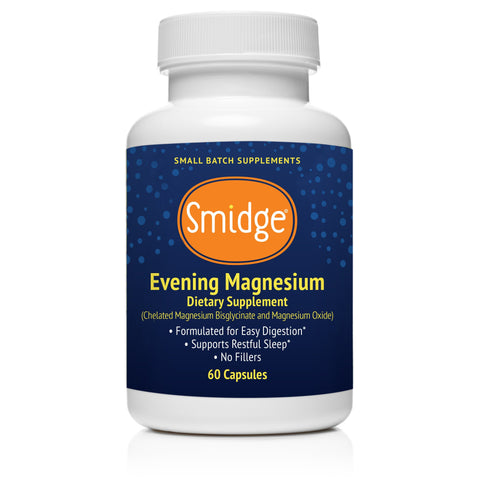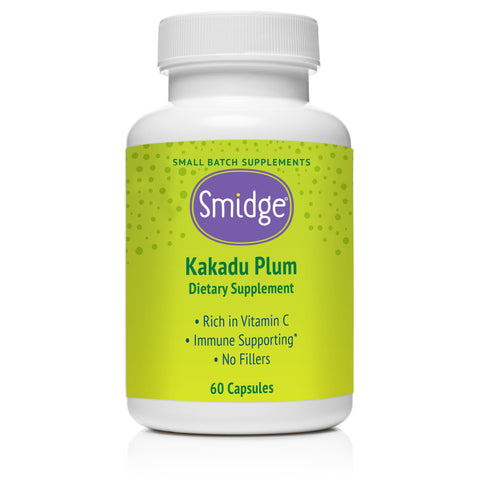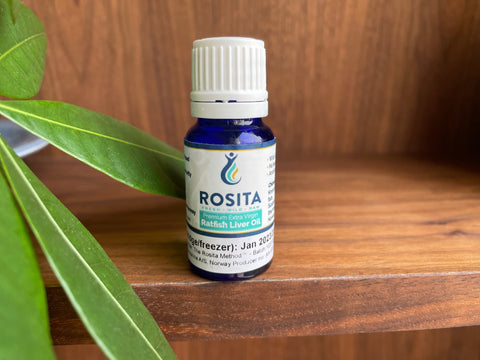Magnesium is prevalent in many foods. Why would I need a supplement?
Morley Robbins, founder of the magnesium-driven Root Cause Protocol, made a shocking discovery in researching hundreds of scientific studies: Magnesium deficiency, or insufficiency, was at the center of… common modern health issues due to its central role in activating 3,751 proteins, and thus thousands of enzyme systems.* This is why the extensive utilization of magnesium throughout the body is undeniable.
In addition, magnesium is not manufactured in the body and therefore, the retention is extremely low. And low magnesium intake is linked to chronic inflammation, one of the drivers of premature aging, being overweight and chronic health conditions.*
Studies suggest that about 48% of the U.S. population gets less than the recommended daily amount of magnesium.
Nuts, leafy greens, beans, seeds, avocado (and, yes, unprocessed dark chocolate!) are all high in this mineral. But your diet may be limited. And even when we eat these magnesium-rich foods, they still can fall short.
Due to a depletion of soil minerals, many foods do not deliver the nutrients they once did. That’s why in addition to the whole foods they eat, nutrition-conscious folks often choose a premium magnesium supplement like Smidge® Evening Magnesium.
What foods are good sources of magnesium?
Lots of goodies. In general, foods containing dietary fiber contain magnesium. Check out the list below for your favorite nutritional sources of magnesium (RDA means recommended daily allowance).
- Pumpkin seeds: 46% of the RDA in a quarter cup (16 grams)
- Spinach, lightly steamed: 39% of the RDA in a cup (180 grams)
- Swiss chard, lightly steamed: 38% of the RDA in a cup (175 grams)
- Dark chocolate (70 to 85% cocoa): 33% of the RDA in 3.5 ounces (100 grams)
- Black beans: 30% of the RDA in a cup (172 grams)
- Quinoa, cooked: 33% of the RDA in a cup (185 grams)
- Halibut: 27% of the RDA in 3.5 ounces (100 grams)
- Almonds: 25% of the RDA in a quarter cup (24 grams)
- Cashews: 25% of the RDA in a quarter cup (30 grams)
- Mackerel: 19% of the RDA in 3.5 ounces (100 grams)
- Avocado: 15% of the RDA in one medium avocado (200 grams)
- Salmon: 9% of the RDA in 3.5 ounces (100 grams)
It’s also important to note that many commercially available grains are processed in ways that remove the nutrient-rich germ and bran, lowering magnesium content substantially.
Why are healthy magnesium levels difficult to retain?
Magnesium is not manufactured in the body, but we need it for virtually every system in the body to work smoothly. So many opt to get it from food or clean supplements. Each person burns magnesium at different rates. Factors that contribute to low magnesium retention include stress, age (the older you are, the less you retain), exposure to aluminum and the body excreting magnesium through urine and sweat glands.
Here’s how.
Under physical and emotional stress, the body produces stress hormones that cause a cascade of physical effects, all of which consume, block and eliminate magnesium. This is called “magnesium wasting” or your “magnesium burn rate.”
Chronic stress is a magnesium thief. It causes magnesium to be excreted during urination at a rapid rate.
The good news is, supplementing with premium magnesium and eating magnesium-rich foods, especially while under physical and emotional stress can help end the cycle of chronic cortisol production.
What substances can destroy or block magnesium absorption and storage in the body?
Being exposed to certain substances and foods can also affect how much magnesium you absorb or burn through:
- If you’re taking prescription drugs, you may be more likely than others to need magnesium supplementation.
- Processed foods, caffeine, all pharmaceutical medications like antacids, PPIs, diuretics, ant-depressants, antibiotics, ACE inhibitors, blood pressure lowering drugs, statin drugs and birth control pills and more.
- Alcohol.
Why is magnesium glycinate complex so important?
Smidge® Evening Magnesium uses magnesium combined with the amino acid glycine to create magnesium glycinate — a unique compound that’s highly bioavailable and well-tolerated by even the most sensitive individuals. To take it a step further, we add magnesium oxide which helps your body utilize the magnesium your intestines have absorbed.
Here’s the nitty-gritty on this special chelated form of magnesium (another name for it is chelated magnesium bisglycinate):
- It gives you the most concentrated form of magnesium in an easy-to-absorb form, as noted above.
- It buffers the pH in the intestines, allowing for more magnesium to be absorbed via the passive pathway of magnesium absorption.
- It reduces the hydration shell that usually surrounds elemental magnesium. This not only helps with absorption, but seems to help limit magnesium's potential laxative effect.
- It allows some of the magnesium to be absorbed via the amino acid active pathway, thus providing two ways for the body to make use of magnesium.
In addition:
- Magnesium glycinate saves your body from attaching amino acids to the magnesium for active absorption because they're already chelated onto the magnesium.
- The glycine occupies active receptors on the magnesium, interfering with phytate and other nutrients that can attach to magnesium and inhibit absorption.
- Glycine also seems to help you sleep more deeply and feel more alert throughout the day.
So you can soak it all in!
How many hours before going to sleep would you recommend taking this?
You can take Smidge® Evening Magnesium about a half-hour before going to sleep. You can also experiment and see what works best for you, as every individual responds differently to different types of magnesium.
Is it better to eat something with Evening Magnesium?
It helps to take this supplement with food, as it’s better for absorption of the magnesium and digestive comfort. (Who doesn’t love snack time?) And if you can, take it with an easy-to-digest, nutrient-dense food, as Smidge® supplements work best with a clean, real food diet :)
And for those with low stomach acid, try some lacto-fermented veggies or apple cider vinegar with food about a half- hour before taking your Evening Magnesium. (You can also try Smidge® HCl + Enzymes for low stomach acid production.)
Can I take Smidge® Evening Magnesium and Morning Magnesium together?
Definitely! Evening Magnesium and Morning Magnesium are designed to work together, so they complement each other beautifully. That’s why many of our customers take one upon waking and one before their sweet dreams. This way, you can enjoy five different types of magnesium that work in synergy to supply your body throughout your precious 24 hour cycles — the optimal way to manage your magnesium levels.
Can this be taken as a powder without the capsule?
Yes! You can take Smidge® Evening Magnesium as powder if you open up the capsule. It works best mixed with a smoothie or something blended, as it may not dissolve as well in just plain liquid.
Or you can try taking it under the tongue and then quickly chasing it with a sip of some fresh juice or spring water.
Where is this magnesium sourced and created?
Smidge® Evening Magnesium is sourced and produced in the U.S.
How does magnesium increase calming GABA?
Keeping your magnesium level adequate may ensure proper GABA functionality and help restore emotional balance. Magnesium achieves this feat by binding itself to and stimulating the GABA receptors of the brain: the neurotransmitter that also promotes sleep. Magnesium also aids in the conversion of tryptophan to serotonin, which may support a calm, positive mood.* GABA (Gamma-Aminobutyric Acid) is an inhibitory neurotransmitter that lessens a nerve cell’s ability to receive, create or send chemical messages to other nerve cells.





Comments (0)
There are no comments for this article. Be the first one to leave a message!